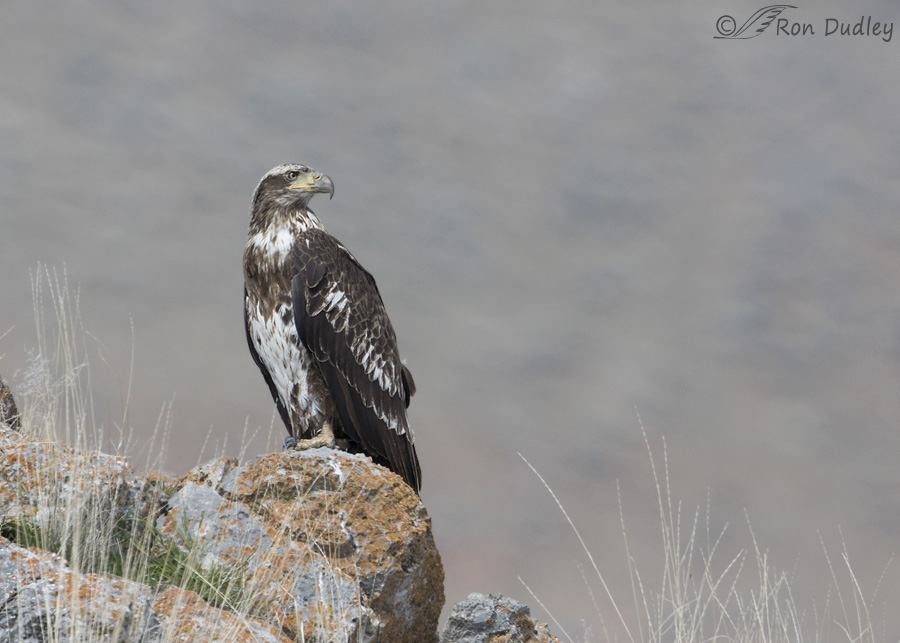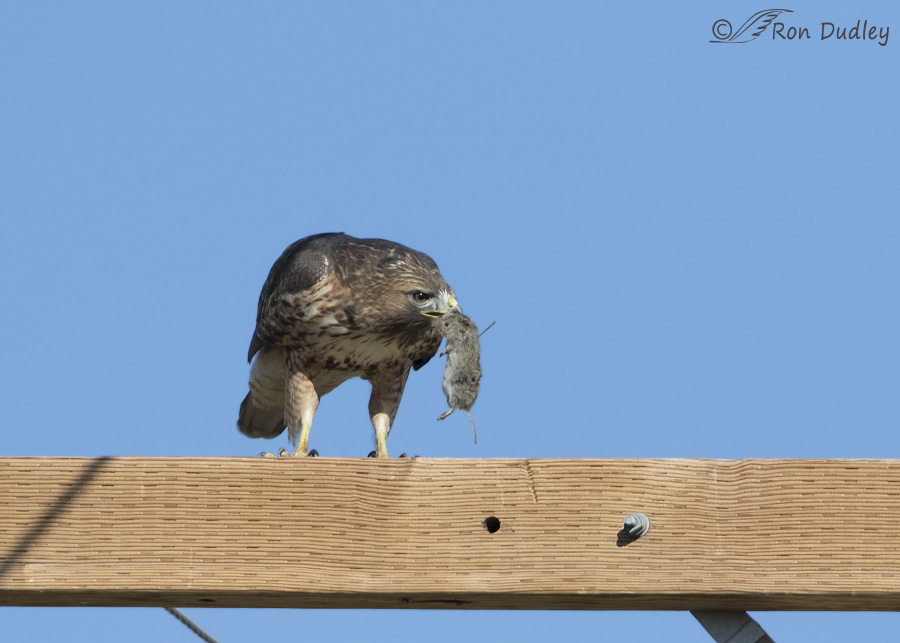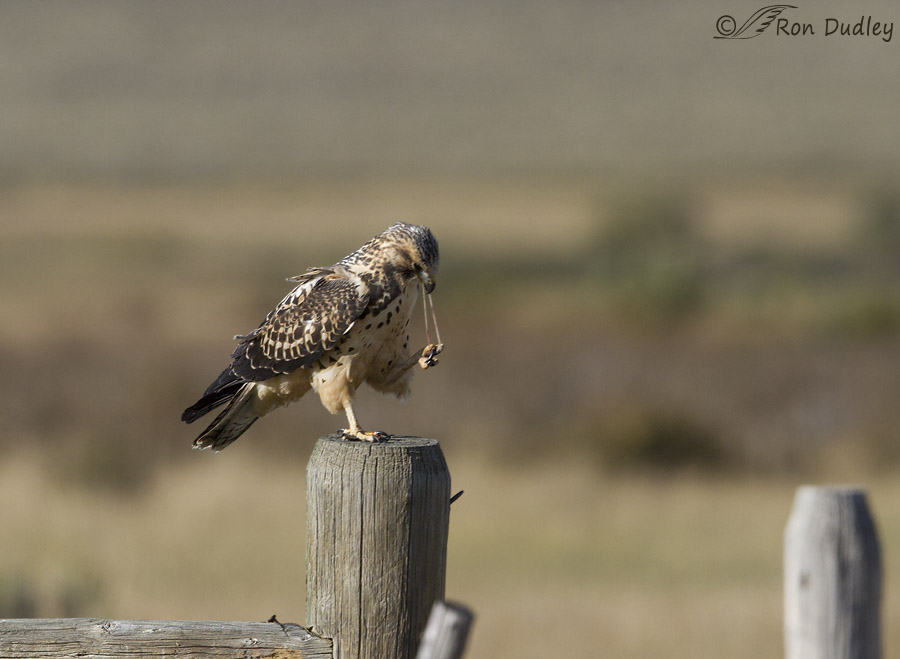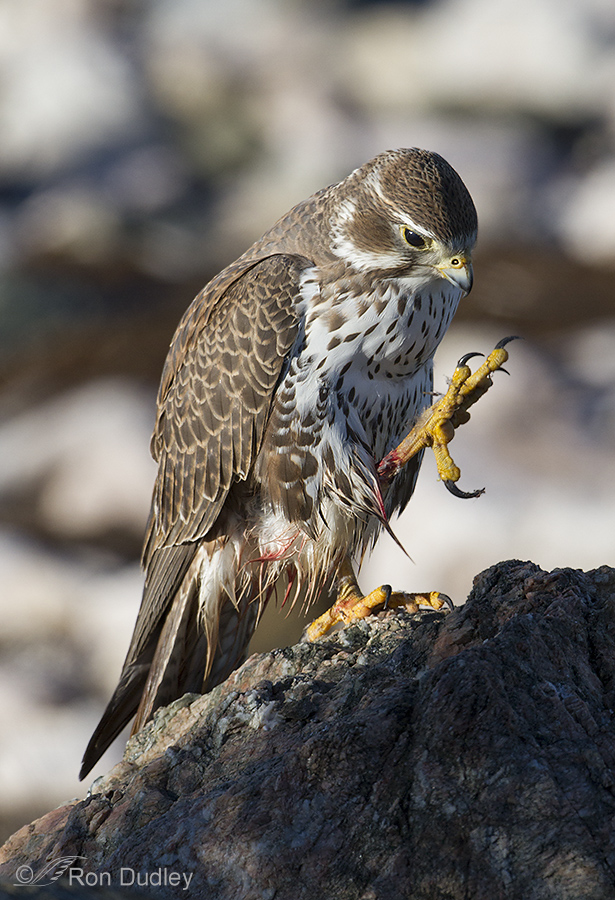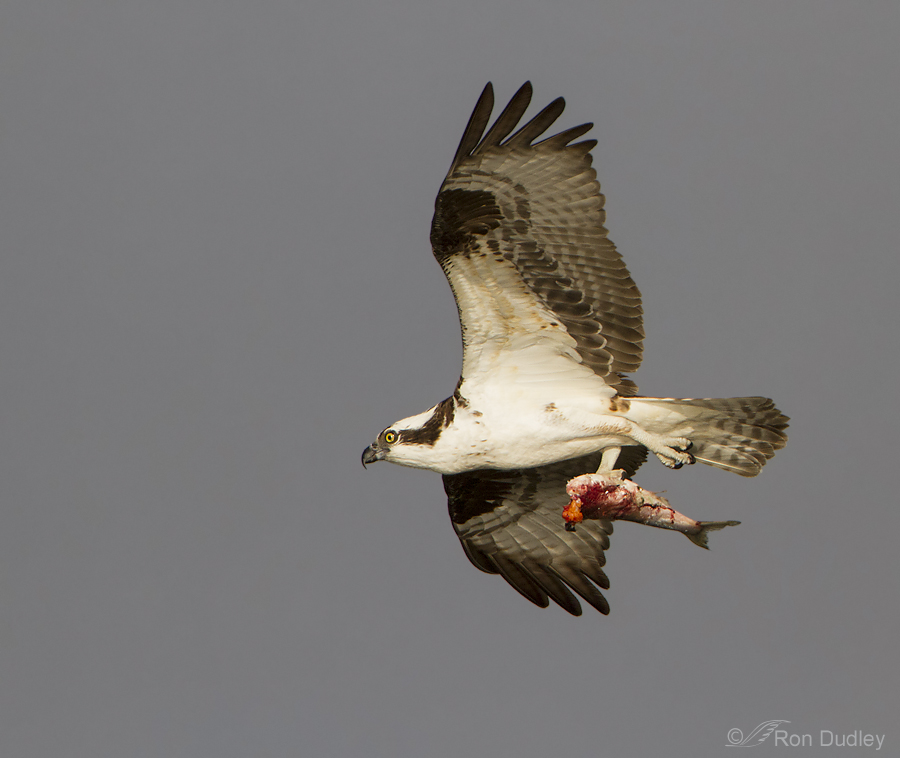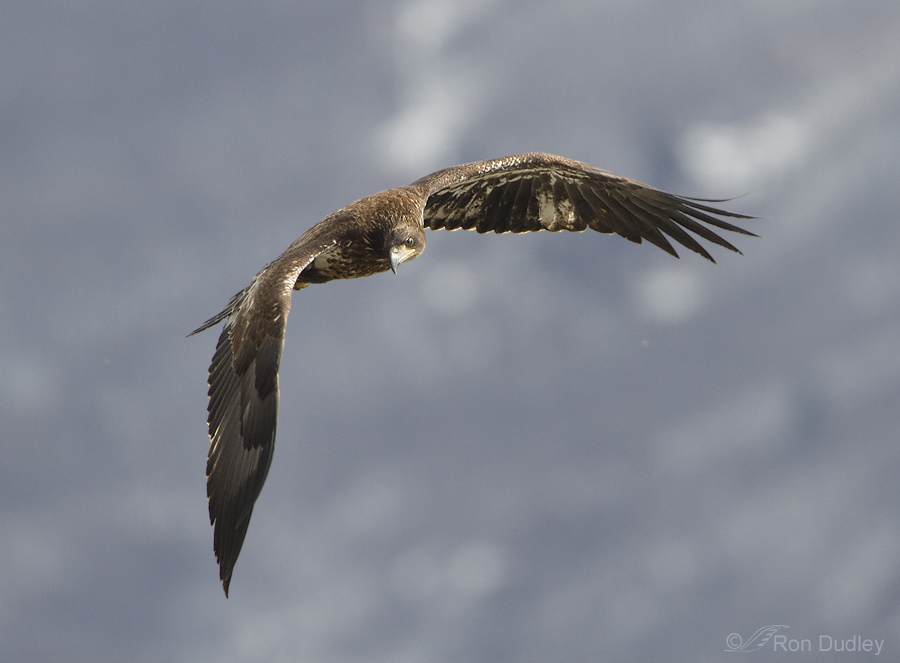Tag: crop
A Red-tailed Hawk And A Vole – Before And After The Meal
A Digestive Surprise For A Young Swainson’s Hawk
The Menacing Talons Of A Prairie Falcon
Osprey In Flight With Trout
A Compositional Conundrum – Immature Bald Eagle
Another Encounter With The Antelope Island Prairie Falcon
Two days ago we located the Prairie Falcon on the causeway once again. This bird spends most of its time on the island itself but occasionally ventures onto the causeway to hunt ducks. I’m quite sure, as are others who are more falcon knowledgeable than I, that it’s the same individual in all of my recent Prairie Falcon posts. Usually I complain about not being able to get close enough to my subjects but here I had the opposite problem. The only way I could even see this bird was from very close. From any further away the falcon was completely obstructed by the road edge and the vegetation growing there. The first two images are essentially full frame (very little crop) and that’s without my tc attached, so the falcon is too tight in the frame but this post is more about falcon adaptations than it is about aesthetics anyway. 1/1600, f/9, ISO 500, 500 f/4, natural light, not baited, set up or called in This bird was a mess! It had apparently just finished dining on duck so it was wet, blood encrusted and disheveled, with tidbits still clinging to feet and beak. The bird is meticulously cleaning and scratching its beak with those impressive talons, which seems to me to be about like picking one’s teeth with a Bowie knife. 1/1600, f/9, ISO 500, 500 f/4, natural light, not baited, set up or called in But what I found particularly interesting about many of the images I took of this bird was the good look at the well-defined and bulging crop. …
American Kestrel Eating “Grit”
I don’t have any beautiful photos today but I do have some interesting behavior. Yesterday morning, I came across this female American Kestrel sitting in the middle of a large, isolated, gravel parking lot/camping area on Antelope Island. I thought it was an unusual resting place for a kestrel and as I approached her in my pickup I was even more intrigued when she didn’t immediately fly off, as this species typically does. She repeatedly took a couple of wingbeats and flew a few feet, but never far. She was, for some reason, reluctant to leave and at first I couldn’t figure out why. I was eventually able to work my way close enough to her to see that she was swallowing small stones from the gravel parking lot. This was a behavior that I’d never seen before in a raptor, though I’ve often seen it in other birds. As a biologist, I’m aware of the general function of the gizzard in birds – that seed eating birds swallow “grit” to act as teeth (birds have no true teeth, presumably a weight saving adaptation for flight) within the grinding gizzard so they can physically break down their hard food and prepare it for chemical digestion. And it had been my understanding that raptors don’t consume grit because they don’t eat seeds. The flesh they consume is easily digested and doesn’t need to be physically broken down first. So why is this little falcon swallowing small stones? I decided to ask Mark Runnels, an extremely knowledgeable master falconer from Oklahoma and…
Escaped Falconry Bird – Peregrine Falcon, Again
This morning, just as the sun was peeking over the mountains, we found this Peregrine Falcon along the Antelope Island Causeway. 1/1000, f/6.3, ISO 640, 500 f/4, 1.4 tc, natural light, not baited, set up or called in It was feeding on a bird of some kind, possibly prey stolen from another falcon, as we saw two of them as we approached but one flew off. The falcon was intent on its meal and allowed me to photograph it for 22 minutes. The lighting was low and difficult, with the light hitting the bright breast of the bird and leaving its darker parts in shade for much of that time. Photographers will note from my techs that I fiddled with my settings quite a bit – adjusting for the quickly changing light and the removal of my tc in anticipation of take-off. It was a challenging situation for me. 1/640, f/6.3, ISO 640, 500 f/4, 1.4 tc, natural light, not baited, set up or called in It kept wanting/trying to eat the feet and legs of the bird but as far as I could tell the falcon never actually swallowed them. 1/1600, f/5.6, ISO 640, 500 f/4, 1.4 tc, natural light, not baited, set up or called in This falcon is obviously an escaped Falconry bird – notice the leather falconry anklets just above the feet. Here the falcon turned broadside to the light for just a few moments. 1/3200, f/5, ISO 640, 500 f/4, natural light, not baited, set up…
A Red-tailed Hawk And A Vole – Before And After The Meal
A Digestive Surprise For A Young Swainson’s Hawk
The Menacing Talons Of A Prairie Falcon
Osprey In Flight With Trout
A Compositional Conundrum – Immature Bald Eagle
Another Encounter With The Antelope Island Prairie Falcon
Two days ago we located the Prairie Falcon on the causeway once again. This bird spends most of its time on the island itself but occasionally ventures onto the causeway to hunt ducks. I’m quite sure, as are others who are more falcon knowledgeable than I, that it’s the same individual in all of my recent Prairie Falcon posts. Usually I complain about not being able to get close enough to my subjects but here I had the opposite problem. The only way I could even see this bird was from very close. From any further away the falcon was completely obstructed by the road edge and the vegetation growing there. The first two images are essentially full frame (very little crop) and that’s without my tc attached, so the falcon is too tight in the frame but this post is more about falcon adaptations than it is about aesthetics anyway. 1/1600, f/9, ISO 500, 500 f/4, natural light, not baited, set up or called in This bird was a mess! It had apparently just finished dining on duck so it was wet, blood encrusted and disheveled, with tidbits still clinging to feet and beak. The bird is meticulously cleaning and scratching its beak with those impressive talons, which seems to me to be about like picking one’s teeth with a Bowie knife. 1/1600, f/9, ISO 500, 500 f/4, natural light, not baited, set up or called in But what I found particularly interesting about many of the images I took of this bird was the good look at the well-defined and bulging crop. …
American Kestrel Eating “Grit”
I don’t have any beautiful photos today but I do have some interesting behavior. Yesterday morning, I came across this female American Kestrel sitting in the middle of a large, isolated, gravel parking lot/camping area on Antelope Island. I thought it was an unusual resting place for a kestrel and as I approached her in my pickup I was even more intrigued when she didn’t immediately fly off, as this species typically does. She repeatedly took a couple of wingbeats and flew a few feet, but never far. She was, for some reason, reluctant to leave and at first I couldn’t figure out why. I was eventually able to work my way close enough to her to see that she was swallowing small stones from the gravel parking lot. This was a behavior that I’d never seen before in a raptor, though I’ve often seen it in other birds. As a biologist, I’m aware of the general function of the gizzard in birds – that seed eating birds swallow “grit” to act as teeth (birds have no true teeth, presumably a weight saving adaptation for flight) within the grinding gizzard so they can physically break down their hard food and prepare it for chemical digestion. And it had been my understanding that raptors don’t consume grit because they don’t eat seeds. The flesh they consume is easily digested and doesn’t need to be physically broken down first. So why is this little falcon swallowing small stones? I decided to ask Mark Runnels, an extremely knowledgeable master falconer from Oklahoma and…
Escaped Falconry Bird – Peregrine Falcon, Again
This morning, just as the sun was peeking over the mountains, we found this Peregrine Falcon along the Antelope Island Causeway. 1/1000, f/6.3, ISO 640, 500 f/4, 1.4 tc, natural light, not baited, set up or called in It was feeding on a bird of some kind, possibly prey stolen from another falcon, as we saw two of them as we approached but one flew off. The falcon was intent on its meal and allowed me to photograph it for 22 minutes. The lighting was low and difficult, with the light hitting the bright breast of the bird and leaving its darker parts in shade for much of that time. Photographers will note from my techs that I fiddled with my settings quite a bit – adjusting for the quickly changing light and the removal of my tc in anticipation of take-off. It was a challenging situation for me. 1/640, f/6.3, ISO 640, 500 f/4, 1.4 tc, natural light, not baited, set up or called in It kept wanting/trying to eat the feet and legs of the bird but as far as I could tell the falcon never actually swallowed them. 1/1600, f/5.6, ISO 640, 500 f/4, 1.4 tc, natural light, not baited, set up or called in This falcon is obviously an escaped Falconry bird – notice the leather falconry anklets just above the feet. Here the falcon turned broadside to the light for just a few moments. 1/3200, f/5, ISO 640, 500 f/4, natural light, not baited, set up…


